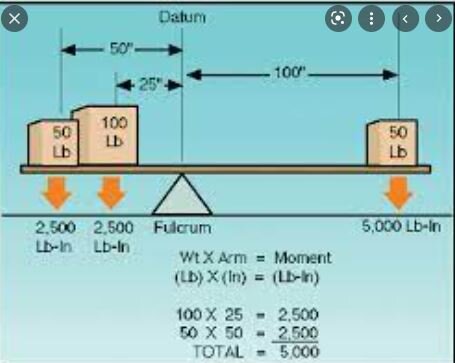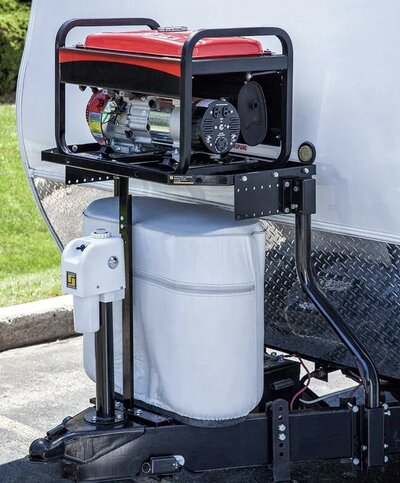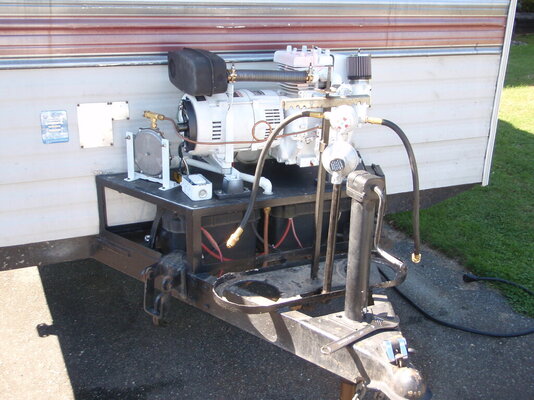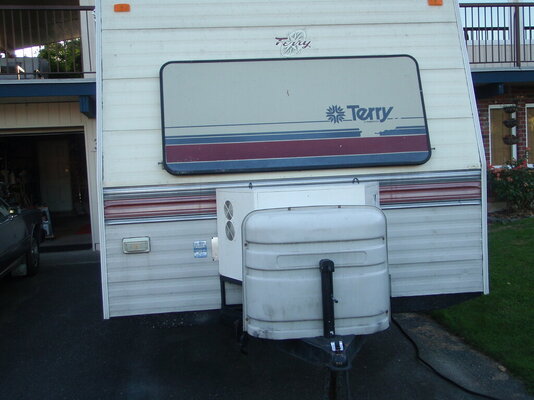You are using an out of date browser. It may not display this or other websites correctly.
You should upgrade or use an alternative browser.
You should upgrade or use an alternative browser.
Generator on tongue contraption
- Thread starter Bugford
- Start date
The friendliest place on the web for anyone with an RV or an interest in RVing!
If you have answers, please help by responding to the unanswered posts.
If you have answers, please help by responding to the unanswered posts.
markandkim
Well-known member
I plan on getting one. My champion dual fuel would add 100 lbs. Soft cover for propane bottles are a must with this set up. Ive read that most users love them.
Rene T
Site Team
I wouldn’t be concerned about the extra weight. My concern is will those 3 tubular legs hold up in a rear end collision or if the driver has to make a emergency stop. I would have to see one up close with a generator mounted.
Gary RV_Wizard
Site Team
I doubt it. The tongue is an integral part of the trailer frame and surely one of the strongest parts of the entire trailer.Isn't that possibly putting a lot of load on an area that the frame wasn't designed to carry?
Can't tell from a photo how strong that structure is. It has to withstand both downward pressure (weight) and lateral forces (torque) during sudden stops (I don't think anybody's trailer accelerates fast enough to create worrisome pressures - LOL!).
Adding a couple hundred pounds to the tongue would require re-balancing the WD hitch and re-checking that the tow vehicle axle ratings have not been exceeded. Except for the height of the brackets, it's not much different than adding a couple batteries to the tongue area.
steveblonde
Well-known member
My biggest concern would be trying to access the propane bottles to refill them and the additional weight on the tow vehicle hitch -ie if the genny weights 100lbs and the frame weights 50lbs thats an additional 150lbs on the hitch. So a 1000lbs hitch weight would now be 1150
whiteva
Well-known member
Go over a bump and expect 5 to 7 Gs. That can force a sudden 1500 lbs or more on those legs. Don't ask how I discovered that little jewel of info.
Kirk
Well-known member
You need also to consider the additional weight on the tow vehicle hitch. Keep in mind that due to the effect of leverage the weight added there will tend to lift weight from the area behind the trailer wheels. It could have significant impact on the handline of the RV. The lighter the weight of the RV, the more significant that impact will be.
On the hitch issue, it would depend on the type of RV you add it too. An ultra lite will have an aluminum frame and doing that will violate the warranty of our travel trailer's aluminum frame. Steel frames probably not so much, but do not ignore that as a broken trailer frame could ruin your whole day.
On the hitch issue, it would depend on the type of RV you add it too. An ultra lite will have an aluminum frame and doing that will violate the warranty of our travel trailer's aluminum frame. Steel frames probably not so much, but do not ignore that as a broken trailer frame could ruin your whole day.
DutchmenSport
Well-known member
You mean, like this one:
OR:
How about this poor shumck! .... actually this is MY 2006 Keystone Springdale. This was 2008. And NO, I did not have a generator attached to the A-frame tongue!
https://i.imgur.com/iNJ6k3g.jpg
OR:
How about this poor shumck! .... actually this is MY 2006 Keystone Springdale. This was 2008. And NO, I did not have a generator attached to the A-frame tongue!
https://i.imgur.com/iNJ6k3g.jpg
Last edited:
Bugford
Well-known member
Yeah, like that!You mean, like this one:
OR:
How about this poor shumck! .... actually this is MY 2006 Keystone Springdale. This was 2008. And NO, I did not have a generator attached to the A-frame tongue!
https://i.imgur.com/iNJ6k3g.jpg
JayArr
Well-known member
Those look like the infamous Lippert frames. There are a few stories on the net about Lippert built trailers folding up like that when driven over large bumps in construction or large potholes. Inferior steel seems to be the problem. Lippert claims they built the frames to the spec given to them by the trailer manufacturer and they won't fix them and the trailer manufacturer is blaming Lippert and won't help either. BEWARE of Lippert anything IMHO.
As long as you have a trailer that was built with more than cheap Chinese tinfoil you should be OK.
The full weight of the genny is not transferred to the hitch, it's four feet back so there is a ratio involved.
My tongue was large enough to move the propane tanks forward a few inches and the genny sits behind them. Tongue weight went up by 60 lbs.
As long as you have a trailer that was built with more than cheap Chinese tinfoil you should be OK.
The full weight of the genny is not transferred to the hitch, it's four feet back so there is a ratio involved.
My tongue was large enough to move the propane tanks forward a few inches and the genny sits behind them. Tongue weight went up by 60 lbs.
Attachments
Kirk
Well-known member
The key is the distance from the added weight to the trailer axles and the weight effect on the hitch will be greater than the weight of the generator, not less. Basic law of leverage from physics class.The full weight of the genny is not transferred to the hitch, it's four feet back so there is a ratio involved.
MoInEd
Well-known member
You mean, like this one:
OR:
How about this poor shumck! .... actually this is MY 2006 Keystone Springdale. This was 2008. And NO, I did not have a generator attached to the A-frame tongue!
https://i.imgur.com/iNJ6k3g.jpg
It's almost surely those failures are due the use of WDH. Most people don't understand how much stress a WD puts on the frame (exactly where it has broken in the images) and also on the tow vehicle as well.
The original post photo where the weight of the gen is right on the front of the A-frame moves almost all the weight to the hitch of the vehicle. Now if you are using a WDH that creates a lot more stress on the frame of the trailer (and the hitch connected to the frame of the tow vehicle). So my short answer would be:
if you are NOT using a WDH then you shouldn't worry about frame failure on the trailer
If you are using a WDH then it does create an extra stress to the frame of the trailer.
Regardless it adds to the weight applied at the tow vehicle hitch.
JayArr
Well-known member
The key is the distance from the added weight to the trailer axles and the weight effect on the hitch will be greater than the weight of the generator, not less.
I think you need to check the book you learned from in Physics class Kirk
The weight of the genny will be apportioned between the ball and the axle based on the ratio of the distances between the two.
Example 1: If the generator were mid point between the ball and the axle then half of it's weight would be on the ball and half on the axle.
Example 2: If it was 1/3 of the way back, say 4 feet from the ball and 8 feet from the axle then 2/3 of the weight would be on the ball and 1/3 would be on the axle.
At no point would the generator exert more force on the ball than it weighs because the generator and the ball are on the same side of the fulcrum point (the axle).
In order to exert more weight on a distant point than you have in weight at the existing point you need the fulcrum between the two. Think skinny kid on one end of a see saw lifting a fat kid but only if they are on separate sides of the fulcrum and only if the fat kid sits closer to the fulcrum.
JayArr
Well-known member
It's the cheap, understrength steel that Lippert used when it made the frames and the fact that they heated the frame up to make the bend at that location and then failed to reinforce it afterward. The bend location is weakened and is also the point load for the frame above it.
This doesn't happen if you cold bend the steel but that takes a big press. It's easier to heat it up cherry red make the bend and then let it cool but that compromises the metal. The way around that is to then weld in reinforcement plating to strengthen it.
Lippert doesn't bother to do that.
On top of that they use really thin steel, 1/8"!
This doesn't happen if you cold bend the steel but that takes a big press. It's easier to heat it up cherry red make the bend and then let it cool but that compromises the metal. The way around that is to then weld in reinforcement plating to strengthen it.
Lippert doesn't bother to do that.
On top of that they use really thin steel, 1/8"!
steveblonde
Well-known member
I repeat 100% of the genny weight and the frame weight will go on the hitch weight and the ball
Bugford
Well-known member
I'm no engineer, but I can't see how this is possible. If you put weight between the hitch and the trailer wheels, how can not at least some of the weight be transferred to the wheels. And if not, at what point along the frame does the weight start being transferred to the wheels. I'm not saying you're wrong, I'm just saying I don't understand. I could see 90% transferred to the hitch,or even 99%, but 100%?I repeat 100% of the genny weight and the frame weight will go on the hitch weight and the ball
steveblonde
Well-known member
semantics being that the hitch is within 8-10" on the genny frame and its a tripod frame with only 1 support at the front. the axles to the trailer are some distance behind (for arguments sake say 15ft) all the weight is on the front of the trailer so while it may not be 100%absoulute its going to be between 99% and 100%. because some people like to think physics the further away from the base a weight is lifted (axles) the heavier the weight becomes - think crane lifting a truck out the ditch the further the boom is extended the heavier the weight is on the end of the boom. the weight itself doesnt change it cant - but the placement is eveything
Ex-Calif
Well-known member
It's called moment weight and it's just math.

If the ball to wheels is 180 inches (15 feet) and the ball to generator distance is 10 inches, 96% of the genny weight is on the ball.
So a 300 lb generator would put 288 lbs on the ball. So it's not 99 or 100% but it is a significant percentage.
Having said that there is no way I would load 300# on that thing but it's possible someone will. I would guess my 4k genny weighs 100# so that's like 96# on the ball.
If you understand moment weight your "battery upgrade" would be a rack on the tail of the trailer, probably more than offsetting the genny weight at the front.
Jays install is really good and he has a longer tongue than the OP's picture. I'm guessing Jay's genny is 24 inches from the ball.
We talk a lot about trucks being tongue weight (payload) limited. One could even ballast a trailer to reduce tongue weight if one was so inclined. As long as trailer GW and vehicle CGWR are not exceeded one should be fine.
We used to ballast some 2 place gliders for solo flight.

If the ball to wheels is 180 inches (15 feet) and the ball to generator distance is 10 inches, 96% of the genny weight is on the ball.
So a 300 lb generator would put 288 lbs on the ball. So it's not 99 or 100% but it is a significant percentage.
Having said that there is no way I would load 300# on that thing but it's possible someone will. I would guess my 4k genny weighs 100# so that's like 96# on the ball.
If you understand moment weight your "battery upgrade" would be a rack on the tail of the trailer, probably more than offsetting the genny weight at the front.
Jays install is really good and he has a longer tongue than the OP's picture. I'm guessing Jay's genny is 24 inches from the ball.
We talk a lot about trucks being tongue weight (payload) limited. One could even ballast a trailer to reduce tongue weight if one was so inclined. As long as trailer GW and vehicle CGWR are not exceeded one should be fine.
We used to ballast some 2 place gliders for solo flight.
steveblonde
Well-known member
You are 100% correct but there are still a lot of assumptions what if its 18ft to the axles what if its a 150lbs genny? But again your correct. My dad an engineer used to weight our trailer with a bathroom scale and place stuff around the trailer in order to distribute the weight appropriately. It was funny to watch at 8 or 9 years old - makes sense nowIt's called moment weight and it's just math.
View attachment 152280
If the ball to wheels is 180 inches (15 feet) and the ball to generator distance is 10 inches, 96% of the genny weight is on the ball.
So a 300 lb generator would put 288 lbs on the ball. So it's not 99 or 100% but it is a significant percentage.
Having said that there is no way I would load 300# on that thing but it's possible someone will. I would guess my 4k genny weighs 100# so that's like 96# on the ball.
If you understand moment weight your "battery upgrade" would be a rack on the tail of the trailer, probably more than offsetting the genny weight at the front.
Jays install is really good and he has a longer tongue than the OP's picture. I'm guessing Jay's genny is 24 inches from the ball.
We talk a lot about trucks being tongue weight (payload) limited. One could even ballast a trailer to reduce tongue weight if one was so inclined. As long as trailer GW and vehicle CGWR are not exceeded one should be fine.
We used to ballast some 2 place gliders for solo flight.
Gary RV_Wizard
Site Team
Since a typical 3600 watt generator weighs in at around 100 lbs, much of this discussion in over-think. We are talking 100 lbs or less additional weight on the hitch and stress on the tongue frame. Maybe another 100 lb would be the proverbial straw breaking the camel's back, i.e. the trailer frame is already at or above max load, but in that case failure seems likely anyway.



